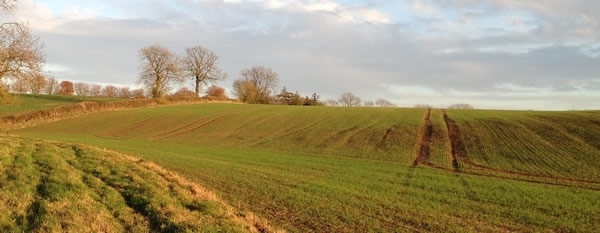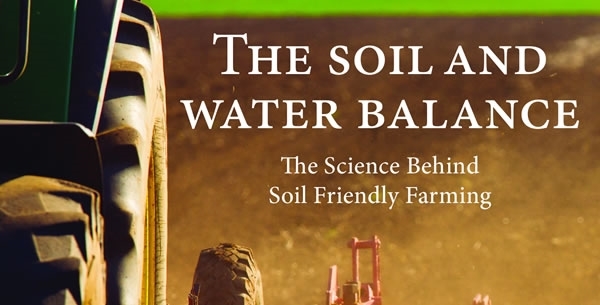
By Prof. Chris Stoate, Allerton Project Head of Research
Grass margins around fields are readily adopted by farmers within agri-environment schemes but are sometimes criticised for failing to deliver on the environmental objectives for which they are intended. But such criticism often arises because too narrow a focus is taken on the benefits. These include the ability to cut hedges later in the winter, after berries have been eaten by birds, and the provision of a habitat for pollinating insects and invertebrate crop pest predators.
The greatest potential is where grass margins are placed against watercourses, including ditches and small streams, as well as rivers. Used in this way, their capacity to reduce movement of soil to adjacent watercourses is well established. We have found that earthworm numbers are more than twice as high in grass margins as in the adjacent field, helping to improve infiltration and reduce surface runoff to water and acting as a refuge for recolonisation of cultivated land, as well as providing a food source for wildlife.
What plant species establish as a result of sowing or natural regeneration also influences the benefits realised by grass margins, as does their subsequent management. We are exploring the traits and associated benefits arising from a range of perennial herbaceous plant species, with the aim of delivering multiple benefits. The establishment and management of riparian woodland, where appropriate, is an extension of that process.
Buffer strips can be further enhanced by creating buffer pools within them to capture runoff, as we have been doing at Loddington since the 1990s, although the efficacy of these is limited on clay soils where very fine material is held in suspension. Additional barriers within field boundary ditches serve a similar role. We have shown that, although eutrophic, pools fed by runoff can have additional biodiversity benefits for birds, amphibians and insects.
Where more permeable dams are installed in field boundary ditches or small streams, these have the potential to buffer downstream areas from flood peaks and we are currently evaluating these in our Water Friendly Farming project. Stacking multiple buffering measures requires additional knowledge, investment and management but increases the value of public benefits delivered from the same area of land.
But we know that each of these measures in non-productive areas has only a limited role in reducing the movement of sediment and nutrients to watercourses and additional measures need to be adopted within fields to improve soil function, reduce soil erosion, and deliver other benefits such as enhanced terrestrial biodiversity.
Research at Loddington has identified the potential of tramline management and reduced tillage intensity for example, and as reported in my March post, we have also explored the potential role of cover crops, and are currently investigating grass leys. An integrated approach to land management needs to be taken to meet environmental objectives, incorporating targeted evidence-based management of both productive and non-productive areas.
How effective these measures are varies considerably from time to time and place to place, a subject I will return to in a future post, but each of them has a place for their cumulative impact. With new funding mechanisms for agri-environment schemes currently under consideration in the lead up to Brexit, there is considerable potential for a number of options to enhance the standard grass margins that are now widely adopted across the country. One solution might be a modular approach to buffer strips with bolt-on options, but crucially, each adopted according to site specific, local circumstances.
It is vital to recognise that we can’t rely on buffers outside the cropped area alone, however elaborate they might become in some situations. Soil management within the field, reducing erosion in the first place, is fundamental to catchment management and to meeting other environmental objectives, with a range of options for differing soil types. But these require attention to detail, timely operation, capital investment, technical advice and support, and in some circumstances reduce crop yields.
There are still unknowns and a need for continuing research, and we continue to play a major role in that at Loddington, but we know enough about a range of field margin and in-field measures to adopt a package for improved land management that delivers food production alongside other public benefits.

Get the inside track on soil and water research
Priced at just £9.95, our new book The Soil & Water Balance provides the inside track on soil and water research.
Presented in a Q&A style, much like last year’s popular Moorland Balance, this 100-page book looks at the problems and solutions on topics ranging from erosion and contamination, to the impact on songbirds and other wildlife.
Combining years of research at the GWCT's Allerton Project demonstration farm with tens of external scientific papers, this is a fascinating study of how farming can adapt to the challenges it currently faces.
Buy now >